Biological Engineering
 Arianna McCarty, a chemical and biological engineering senior, has distinguished herself through a remarkable combination of academic and research excellence, earning the Astronaut, Boettcher and Goldwater scholarships. Her research spans computational genomics, the respiratory microbiome and tissue engineering aimed at improving heart health.
Arianna McCarty, a chemical and biological engineering senior, has distinguished herself through a remarkable combination of academic and research excellence, earning the Astronaut, Boettcher and Goldwater scholarships. Her research spans computational genomics, the respiratory microbiome and tissue engineering aimed at improving heart health.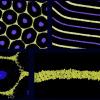 Assistant Professor Ankur Gupta, the study’s lead researcher, and his team have developed a way to simulate natural animal patterns, including their imperfections. The findings could lead to new materials that turn to camouflage on demand.
Assistant Professor Ankur Gupta, the study’s lead researcher, and his team have developed a way to simulate natural animal patterns, including their imperfections. The findings could lead to new materials that turn to camouflage on demand. A CU Boulder research team co-led by Distinguished Professor Christopher Bowman has received up to $5.8 million from ARPA-H to develop new treatments that temporarily suspend the immune response after severe burns or tissue injuries, aiming to reduce pain, speed healing and prevent long-term damage. The approach could also benefit patients with limited access to immediate medical care.
A CU Boulder research team co-led by Distinguished Professor Christopher Bowman has received up to $5.8 million from ARPA-H to develop new treatments that temporarily suspend the immune response after severe burns or tissue injuries, aiming to reduce pain, speed healing and prevent long-term damage. The approach could also benefit patients with limited access to immediate medical care. Saad Bhamla, a pioneering scientist known for studying unusual biological systems and inventing ultra-low-cost medical devices, will join the Department of Chemical and Biological Engineering and the BioFrontiers Institute in August. His work blends biology, engineering and frugal science.
Saad Bhamla, a pioneering scientist known for studying unusual biological systems and inventing ultra-low-cost medical devices, will join the Department of Chemical and Biological Engineering and the BioFrontiers Institute in August. His work blends biology, engineering and frugal science. Distinguished Professor Kristi Anseth, of chemical and biological engineering, designs biomaterials that interact with living tissues to promote repair and regeneration, aiding in healing injuries and diseases. Her lab works with hydrogels—a degradable biomaterial—to deliver molecules at the right time and sequence to accelerate the healing process.
Distinguished Professor Kristi Anseth, of chemical and biological engineering, designs biomaterials that interact with living tissues to promote repair and regeneration, aiding in healing injuries and diseases. Her lab works with hydrogels—a degradable biomaterial—to deliver molecules at the right time and sequence to accelerate the healing process. CU Boulder researchers, led by Ted Randolph, a professor in the Department of Chemical and Biological Engineering, have developed a groundbreaking temperature-stable rabies vaccine that combines multiple doses into a single shot—an innovation that could vastly improve global access to life-saving immunization.
CU Boulder researchers, led by Ted Randolph, a professor in the Department of Chemical and Biological Engineering, have developed a groundbreaking temperature-stable rabies vaccine that combines multiple doses into a single shot—an innovation that could vastly improve global access to life-saving immunization.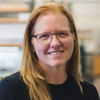 Professor Kristi Anseth is known for developing tissue substitutes that improve treatments for conditions like broken bones and heart valve disease. She recently made key discoveries about sex-based differences in cardiac treatment outcomes. Anseth is also among the few innovators elected to all three national academies: Sciences, Engineering and Medicine.
Professor Kristi Anseth is known for developing tissue substitutes that improve treatments for conditions like broken bones and heart valve disease. She recently made key discoveries about sex-based differences in cardiac treatment outcomes. Anseth is also among the few innovators elected to all three national academies: Sciences, Engineering and Medicine.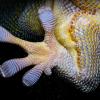 A gecko-inspired technology developed by the Shields Lab, in collaboration with doctors at the University of Colorado Anschutz Medical Campus, uses a specially designed material that adheres to tumors inside the body and steadily releases chemotherapy drugs over several days—potentially allowing for fewer but longer-lasting therapies.
A gecko-inspired technology developed by the Shields Lab, in collaboration with doctors at the University of Colorado Anschutz Medical Campus, uses a specially designed material that adheres to tumors inside the body and steadily releases chemotherapy drugs over several days—potentially allowing for fewer but longer-lasting therapies.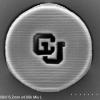 The tiny particles could potentially help enhance drug distribution in human organs, improving the drug’s overall effectiveness or aid in removing pollutants from contaminated environments.
The tiny particles could potentially help enhance drug distribution in human organs, improving the drug’s overall effectiveness or aid in removing pollutants from contaminated environments.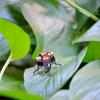 Assistant Professor Kaushik Jayaram, in collaboration with Laura Blumenschein, has received a $1.4 million grant from the U.S. Air Force Research Laboratory to develop a tiny robot super team capable of navigating a complex maze of machinery and squeeze through the tightest of spaces—like the guts of a jet engine—to potentially perform non-destructive evaluation faster, cheaper and better than ever before.
Assistant Professor Kaushik Jayaram, in collaboration with Laura Blumenschein, has received a $1.4 million grant from the U.S. Air Force Research Laboratory to develop a tiny robot super team capable of navigating a complex maze of machinery and squeeze through the tightest of spaces—like the guts of a jet engine—to potentially perform non-destructive evaluation faster, cheaper and better than ever before.

